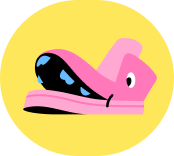localisation of function in the brain
Cards (16)
- label the lobes freya!!! xxA) frontal lobeB) parietal lobeC) occipital lobeD) cerebellumE) temporal lobe
- frontal lobesspeech, thought and learning
- parietal lobestouch, temperature and pain
- temporal lobeshearing and memory
- occipital lobesvisual information
- motor cortexat the back of the frontal lobegenerates voluntary motor movementsboth left and right hemispheresone side of brain controls the opposite side of bodydamage in area - loss of control over fine motor movements
- somatosensory cortexfront of parietal lobesuses sensory information from skin - touch, heat, painthe amount of somatosensory area in a body party = its sensitivityin both left and right hemisphereone side of the brain receiving sensory information from the opposite side of body
- visual cortexback of occipital lobebegins at the retina and transmitted to the brain via the optic nerveprocess different types of visual information - colour, shape or movementboth left and right hemisphere
- auditory cortexin temporal lobehearingauditory pathway starts in inner ear and sound waves are converted to nerve impulses, travel via auditory nerve to auditory cortexcauses appropriate response to the speech based informationdamage causes partial hearing lossin both left and right hemispheres
- Broca's areaonly in the left hemispherefrontal lobespeech productiondamage = Broca aphasia , slow speech, lacks fluencyPaul Broca - surgeon who identified the area of brain, case study = tan, able to understand speech but couldn't produce it in speech or writing, only syllable he could express was Tan
- Wernicke's areaonly left hemispheretemporal lobelanguage comprehensiondamage = Wernicke aphasia , no problem producing language but its meaningless because of lack of understanding
- strength - Petersen et al, brain scanssupporting evidence - used brain scans to demonstrate how Wernicke's area was active during listening tasks and Broca's area was active in a reading task-suggests these areas of the brain do have different functions
- weakness - Lashley , rat trainingsuggests that higher cognitive functions - learning - aren't localised , distributed in a more holistic wayLashley trained rats to complete a maze, removed areas of the brain to see if he could erase the memory of mazerats still able to find way through maze - regardless of size and location removedsuggests its too complex to be localised , uses many parts of brain - reductionist
- strength - Lashley rat studystudy uses animalscant generalise the results to human learninghumans have much higher cognitive function - more developed cortex-localisation could be different in humans and animals
- weakness - individual differencesresearch found individual differences in the language areas of brain - pattern of activation varies from person to personmore studies found significant gender differences in the size of brain areas to do with languageHarasty et al - women have larger Broca's and Wernicke's areas than men
- weakness - plasticitywhen brain becomes damaged and a particular function has been lost, rest of brain is able to recognise itself attempting to recover the lost functiondoesn't happen every time but are several cases of stroke victims who did this-function can change , suggesting issue with idea of localisation
